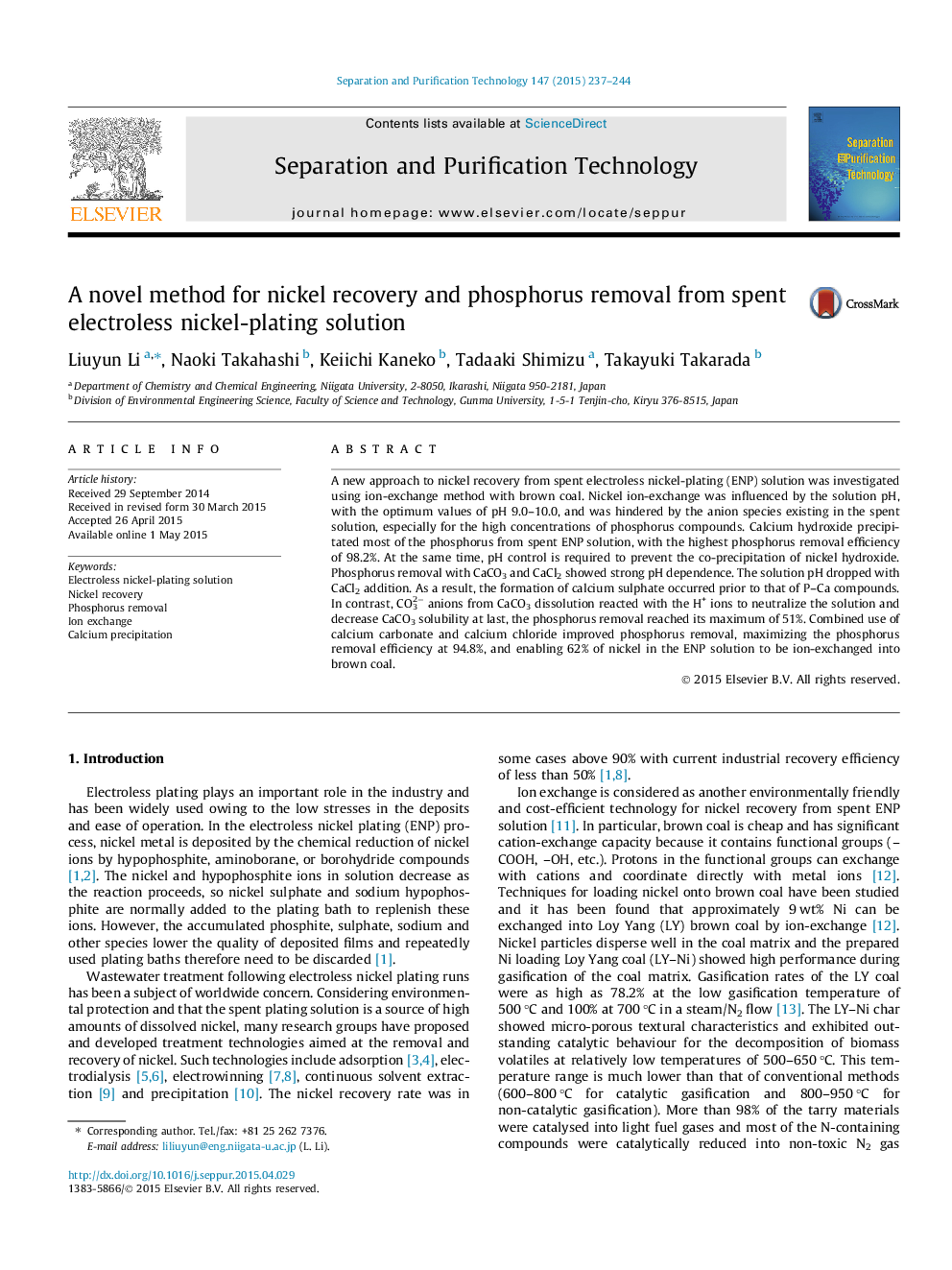| Article ID | Journal | Published Year | Pages | File Type |
|---|---|---|---|---|
| 640523 | Separation and Purification Technology | 2015 | 8 Pages |
•Nickel recovery from spent electroless nickel-plating (ENP) solution using brown coal is investigated.•High phosphorus removal efficiency and low nickel loss are obtained by combined using CaCO3 and CaCl2 to spent ENP solution.•Nickel recovery is improved when phosphorus removal from solution.•Nickel ion-exchanged brown coal is prepared using spent ENP solution.
A new approach to nickel recovery from spent electroless nickel-plating (ENP) solution was investigated using ion-exchange method with brown coal. Nickel ion-exchange was influenced by the solution pH, with the optimum values of pH 9.0–10.0, and was hindered by the anion species existing in the spent solution, especially for the high concentrations of phosphorus compounds. Calcium hydroxide precipitated most of the phosphorus from spent ENP solution, with the highest phosphorus removal efficiency of 98.2%. At the same time, pH control is required to prevent the co-precipitation of nickel hydroxide. Phosphorus removal with CaCO3 and CaCl2 showed strong pH dependence. The solution pH dropped with CaCl2 addition. As a result, the formation of calcium sulphate occurred prior to that of P–Ca compounds. In contrast, CO32− anions from CaCO3 dissolution reacted with the H+ ions to neutralize the solution and decrease CaCO3 solubility at last, the phosphorus removal reached its maximum of 51%. Combined use of calcium carbonate and calcium chloride improved phosphorus removal, maximizing the phosphorus removal efficiency at 94.8%, and enabling 62% of nickel in the ENP solution to be ion-exchanged into brown coal.
